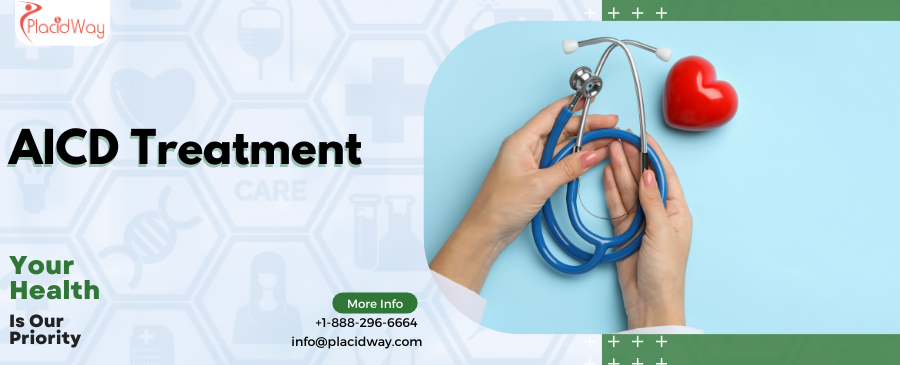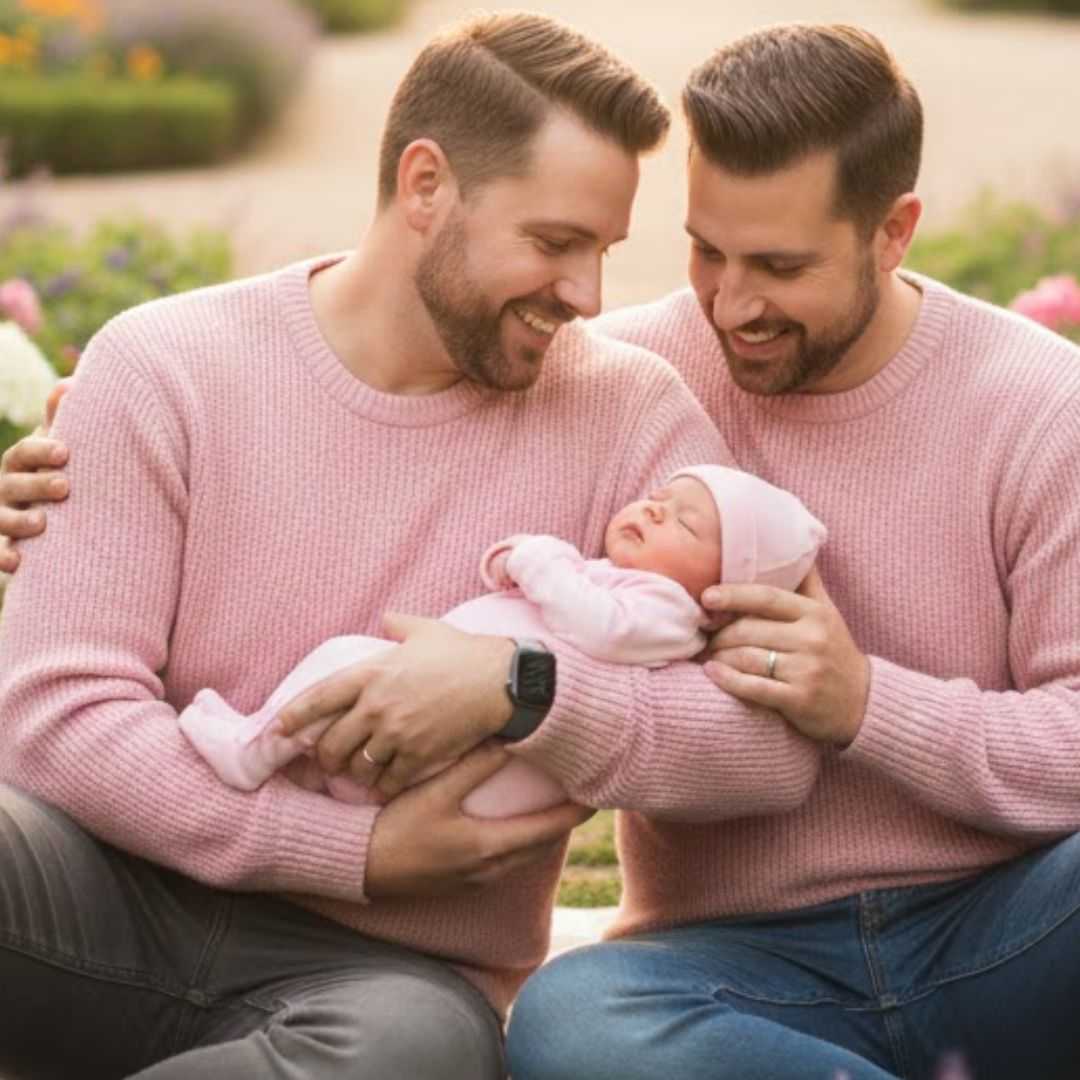
Protecting Your Heart: Understanding the AICD Implant for a Safer Tomorrow
Facing a diagnosis that suggests you might need an AICD (Automated Implantable Cardioverter Defibrillator) can bring a whirlwind of emotions and questions. It's a significant step, but one that offers incredible protection for your heart, especially if you're at risk for sudden cardiac arrest. For many, exploring options for this vital procedure, including considering high-quality care in another country, becomes a path to better health and peace of mind.
An AICD is essentially your personal guardian for your heart's rhythm. This small, battery-powered device is surgically implanted, usually near your collarbone, with thin wires (leads) extending to your heart. Its job is to constantly watch your heartbeat. If it detects a life-threateningly fast or irregular rhythm, like ventricular tachycardia or ventricular fibrillation – conditions that can lead to sudden cardiac arrest – it delivers a controlled electrical pulse or shock to restore a normal rhythm. Think of it as an emergency responder always on duty, ready to act the moment your heart needs it.
Patients often search for terms like "what is an ICD device," "why do I need a defibrillator implant," "symptoms of heart rhythm problems," or "cost of AICD surgery." This comprehensive guide aims to address these concerns and more, providing clarity on the AICD procedure, its benefits, and what to expect, especially if you're considering medical tourism for your treatment. We understand that navigating serious medical decisions requires empathy, clear information, and practical insights.
What symptoms indicate you might need an AICD?
While an AICD is a preventive device, the underlying conditions that necessitate its implant often present with distinct symptoms. Patients frequently ask, "What are the signs of heart rhythm problems?" or "How do I know if I'm at risk for sudden cardiac arrest?"
- Unexplained Fainting (Syncope): This is a critical warning sign. If your heart stops beating effectively, even for a few seconds, it can lead to a sudden loss of consciousness.
- Severe Dizziness or Lightheadedness: Similar to fainting, reduced blood flow to the brain due to erratic heartbeats can cause these sensations.
- Palpitations: While common, very strong, rapid, or irregular heartbeats that feel like your heart is "racing" or "pounding" can indicate an arrhythmia.
- Shortness of Breath: Especially if accompanied by chest discomfort or dizziness, this could be a sign of a compromised heart function.
- Chest Pain or Discomfort: Can sometimes be associated with severe arrhythmias or underlying heart disease.
- Fatigue: Persistent, unexplained tiredness, particularly if it's new or worsening.
- Survival of a Sudden Cardiac Arrest (SCA): If you've previously had an SCA and were resuscitated, an AICD is often recommended to prevent future episodes.
These symptoms, especially when combined with a history of heart disease, warrant immediate medical attention and thorough cardiac evaluation.
What are the causes and risk factors for needing an AICD?
Understanding "why do people need an ICD" or "what causes sudden cardiac arrest" is crucial. An AICD doesn't treat the underlying heart disease; it manages the life-threatening rhythm consequences. Here are the main culprits:
- Coronary Artery Disease (CAD) and Heart Attack: Damage to heart muscle from a heart attack can create "electrical scars" that disrupt normal heart rhythm, leading to ventricular tachycardia (VT) or ventricular fibrillation (VF).
- Heart Failure: When the heart can't pump blood effectively, it often enlarges and weakens, making it more prone to dangerous arrhythmias.
- Cardiomyopathy: Diseases of the heart muscle (e.g., dilated, hypertrophic, or arrhythmogenic right ventricular cardiomyopathy) can weaken the heart and disrupt its electrical system.
- Genetic Conditions: Inherited conditions like Long QT syndrome, Brugada syndrome, or Catecholaminergic Polymorphic Ventricular Tachycardia (CPVT) significantly increase the risk of sudden cardiac death.
- Prior Ventricular Arrhythmias: A history of sustained VT or VF that hasn't led to SCA but indicates a high risk.
- Survival of a Previous Sudden Cardiac Arrest: This is a strong indicator for future AICD implantation.
Your doctor will assess your specific risk factors and heart health to determine if an AICD is the right preventive measure for you.
What types of AICD devices and related treatments are available?
When considering an "implantable defibrillator," it's helpful to know there are a few options, each designed for specific patient needs. You might also hear about "heart rhythm device types."
- Transvenous AICD (TV-AICD): This is the most common type. The device (generator) is implanted under the skin, usually in the upper chest, and thin wires (leads) are threaded through veins into the heart chambers. These leads monitor heart activity and deliver therapy. TV-AICDs can be:
- Single-chamber: One lead, typically in the right ventricle.
- Dual-chamber: Two leads, one in the right atrium and one in the right ventricle, allowing for better synchronization.
- Biventricular (CRT-D): Three leads, one in the right atrium, one in the right ventricle, and one on the left ventricle (via a vein on the heart's surface). These devices also provide cardiac resynchronization therapy (CRT) for patients with heart failure.
- Subcutaneous AICD (S-ICD): A newer option where the entire system – generator and lead – is implanted just under the skin, without touching the heart or blood vessels. The generator is usually placed on the side of the chest, and a lead runs along the sternum. This reduces risks associated with leads inside the heart (like infection or fracture) but is not suitable for everyone, particularly those needing pacing functions.
The choice of device depends on your specific cardiac condition, risk factors, and overall health, determined by your cardiologist.
Who is eligible for an AICD implant?
Patients often ask, "Who qualifies for an AICD implant?" or "Is an ICD right for me?" Eligibility is determined by a thorough cardiac evaluation and based on established medical guidelines.
Generally, you might be a candidate if:
- You have survived a sudden cardiac arrest caused by ventricular fibrillation or ventricular tachycardia. (Secondary prevention)
- You have a known heart condition (e.g., severe heart failure, low ejection fraction after a heart attack, certain inherited arrhythmias) that puts you at significant risk of sudden cardiac arrest, even if you haven't had one yet. (Primary prevention)
- Your doctor has identified a specific genetic heart condition (e.g., Long QT syndrome, Brugada syndrome) that carries a high risk of life-threatening arrhythmias.
- Other treatment options, such as medication or catheter ablation, have been unsuccessful or deemed insufficient to manage your risk.
A cardiologist specializing in electrophysiology will conduct tests like an echocardiogram, MRI, Holter monitor, and possibly an electrophysiology study (EPS) to assess your heart's electrical system and determine your individual risk.
What is the recovery process like after AICD implantation?
Understanding "recovery after ICD implant" is vital for patients planning this procedure. The recovery process is generally straightforward but requires adherence to post-operative instructions.
- Immediate Post-Op (Hospital Stay): You'll likely stay in the hospital for 1-2 days. The incision site will be sore, and you might receive pain medication. Nurses will monitor your heart rhythm and the AICD's function.
- First Few Weeks at Home:
- Incision Care: Keep the incision clean and dry. Watch for signs of infection (redness, swelling, discharge, fever).
- Arm Movement Restriction: This is crucial. For about 4-6 weeks, you'll need to limit lifting your arm above your shoulder, reaching behind your back, or engaging in strenuous activities with the arm on the side of the implant. This prevents the leads from dislodging while they "settle" into the heart tissue.
- Pain Management: Mild pain or discomfort at the incision site is normal and can be managed with over-the-counter pain relievers.
- Long-Term Recovery:
- Activity Resumption: After the initial restriction period, you'll gradually return to your normal activities, guided by your doctor.
- Device Checks: Regular follow-up appointments are essential to ensure the AICD is functioning correctly and its battery life is sufficient. These can often be done remotely.
- Psychological Adjustment: Living with an AICD can involve emotional adjustment. Support groups or counseling can be helpful.
Most people resume their usual daily routines within a month or two, feeling more secure knowing their heart is protected.
What are the potential risks and side effects of an AICD?
Patients naturally inquire about "risks of defibrillator implant" or "AICD side effects." Like any surgical procedure, AICD implantation carries some potential risks, though serious complications are uncommon.
- Procedure-Related Risks:
- Infection: At the incision site or, more rarely, around the device or leads.
- Bleeding or Hematoma: Bruising or blood collection under the skin at the implant site.
- Pneumothorax: A collapsed lung, which can occur if the lung is nicked during lead insertion (rare).
- Lead Displacement: The wires connecting the AICD to the heart can move out of position, requiring repositioning.
- Cardiac Tamponade: Bleeding around the heart, interfering with its pumping ability (extremely rare).
- Device-Related Risks and Side Effects:
- Inappropriate Shocks: The AICD might deliver a shock when not medically necessary (e.g., due to rapid but benign heart rhythms or electrical interference). While startling, modern devices have advanced algorithms to minimize this.
- Lead Fracture or Malfunction: Wires can break or malfunction over time, requiring replacement.
- Battery Depletion: The battery will eventually need replacement (typically every 5-10 years), requiring a minor surgical procedure.
- Psychological Impact: Living with an AICD can cause anxiety about receiving shocks or feeling like a "medical patient." Counseling or support groups can help.
Your medical team will discuss these risks thoroughly and take precautions to minimize them.
How much does an AICD implant cost around the world?
One of the main drivers for "medical tourism for AICD" is often the significant cost difference between countries. Patients frequently search for "cost of AICD abroad" or "affordable defibrillator implant." The total cost encompasses the device itself, the surgical procedure, hospital stay, physician fees, and initial follow-up.
| Country/Region | Estimated Cost Range (USD) | Notes |
|---|---|---|
| United States | $40,000 - $80,000+ | Often highest due to healthcare system structure; varies widely by state/hospital. |
| Western Europe (UK, Germany, France) | $30,000 - $60,000+ | Public systems may cover for residents; private options still costly. |
| India | $15,000 - $25,000 | Excellent value, advanced facilities, highly skilled doctors. |
| Thailand | $18,000 - $30,000 | Renowned for patient experience, modern hospitals. |
| Turkey | $17,000 - $28,000 | Strategic location, JCI-accredited hospitals, competitive pricing. |
| Mexico | $20,000 - $35,000 | Proximity to the US, quality care in major cities. |
Note: These are estimated ranges and can vary based on the specific AICD device type (e.g., single-chamber vs. CRT-D), hospital, surgeon's fees, and any additional medical conditions or complications. It's crucial to get a personalized quote.
Why should you consider an AICD procedure abroad, and which countries offer the best value?
Many patients explore "travel for heart device implant" or "best hospitals for AICD overseas." The reasons for choosing medical tourism for an AICD are compelling:
- Significant Cost Savings: As seen in the table above, the primary driver is often the ability to receive high-quality care at a fraction of the cost in Western countries.
- Access to Advanced Technology and Expertise: Many international hospitals boast state-of-the-art equipment and highly skilled, internationally trained cardiac specialists.
- Reduced Waiting Times: In some countries, patients face long waiting lists for essential procedures. Traveling abroad can provide quicker access to necessary treatment.
- High-Quality Care and Patient Experience: Top medical tourism destinations often prioritize patient comfort, offering luxurious facilities, personalized care, and language support.
- Confidentiality and Privacy: For some, the anonymity of receiving treatment abroad is also a factor.
Top Countries for Value:
- India: Renowned for its JCI-accredited hospitals, world-class cardiologists, and incredibly competitive pricing without compromising on quality.
- Thailand: Known for its exceptional patient hospitality, modern facilities, and a strong focus on medical tourism, particularly in cities like Bangkok.
- Turkey: Offers European standards of care at more affordable prices, with many JCI-accredited hospitals and experienced cardiac teams.
- Mexico: A popular choice for North American patients due to its geographical proximity, offering quality care in major cities.
What should you expect when planning medical travel for an AICD?
Organizing "AICD surgery abroad logistics" or "travel guide for AICD patients" can seem daunting, but medical tourism facilitators simplify the process:
- Initial Consultation & Quote: Share your medical records (diagnosis, test results) with a medical tourism provider like PlacidWay. They will obtain quotes from various international hospitals and help you choose.
- Pre-Travel Planning: Assistance with visa applications, booking flights and accommodation, and arranging ground transportation (airport transfers, hospital transport).
- Hospital Experience: Expect a pre-operative consultation with your cardiologist, thorough diagnostics, the AICD implantation procedure, and a hospital stay of 1-2 days. Hospitals catering to international patients often have dedicated staff for language and cultural support.
- Post-Operative Stay: You'll need to stay in the destination country for a period after discharge for follow-up appointments and to ensure stable recovery before flying home. This could range from 1 to 3 weeks depending on your recovery and the doctor's recommendations.
- Follow-up Care: Discuss how post-operative device checks will be managed once you return home. Many modern AICDs allow for remote monitoring.
A reputable medical tourism company will guide you through each step, ensuring you have all necessary information and support.
How can you ensure safety and quality when getting an AICD abroad?
Patient concerns about "safety of AICD surgery overseas" or "how to choose a safe clinic for AICD" are paramount. Here's how to ensure you're getting top-tier care:
- Accreditation: Look for hospitals with international accreditations, such as Joint Commission International (JCI). This signifies adherence to rigorous patient safety and quality standards.
- Surgeon Credentials: Verify the surgeon's qualifications, experience with AICD implants, and membership in international cardiac societies. Inquire about their success rates.
- Device Quality: Ensure the AICD devices used are from reputable international manufacturers (e.g., Medtronic, Boston Scientific, Abbott) and are FDA/CE approved.
- Comprehensive Package: A transparent quote should include all aspects: the device cost, surgery, hospital stay, medications, and initial follow-up. Beware of hidden fees.
- Medical Tourism Facilitator: Working with an experienced facilitator like PlacidWay can significantly enhance safety. They pre-screen hospitals and doctors, handle logistics, and provide patient advocacy.
- Communication: Ensure clear communication channels with the medical team, including access to interpreters if needed.
Thorough research and careful planning are your best tools for a safe and successful outcome.
What are real patient experiences with AICD surgery abroad?
Hearing "patient success stories from abroad" can provide reassurance. While individual results vary, the overarching theme from patients who've sought AICD implantation through medical tourism is positive.
- Cost Relief: "I was looking at $70,000 for my AICD in the US, but in India, I got the same high-quality device and surgery for under $20,000. It was life-changing." - John P. from Canada.
- Expert Care: "My cardiologist in Turkey was incredibly skilled and attentive. The hospital felt like a five-star hotel, and I never felt rushed. My recovery was smooth, and I'm back to living an active life." - Maria G. from the UK.
- No Waiting Lists: "I couldn't afford to wait months for my AICD. PlacidWay helped me get to Thailand within weeks, and the care was outstanding. My family and I are so grateful." - David L. from Australia.
- Comprehensive Support: "The medical tourism company handled everything from my flights to my appointments. I felt supported every step of the way, making a stressful situation much easier to manage." - Susan T. from the US.
These stories underscore the potential for high-quality, affordable, and timely medical care for AICD implantation in leading medical tourism destinations, offering a renewed sense of hope and security for patients worldwide.
Take the Next Step with PlacidWay
Ready to explore treatment options abroad? Discover top clinics, compare prices, and get a free quote tailored to your needs with PlacidWay.
Heart Surgery Abroad, Cardiac Care Abroad





.png)

.png)
.png)

Share this listing